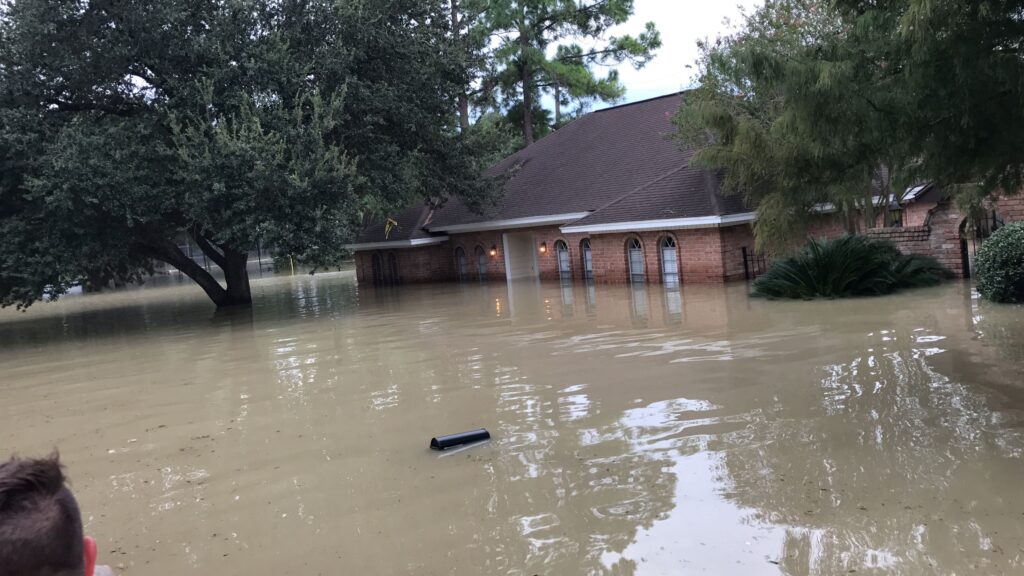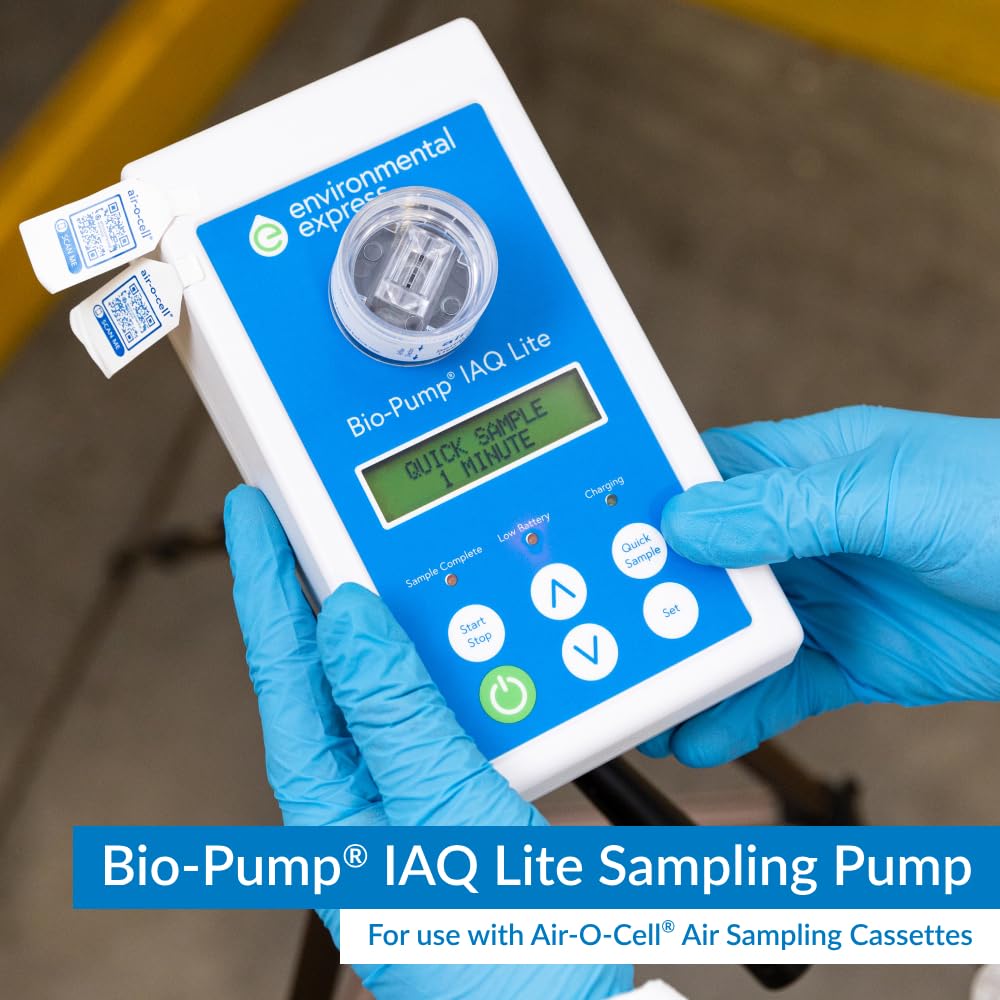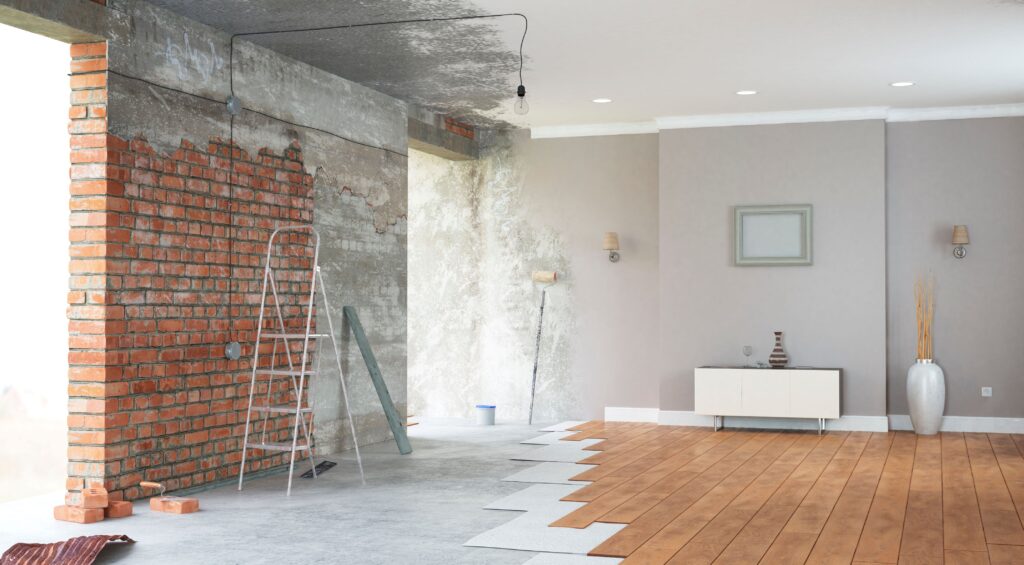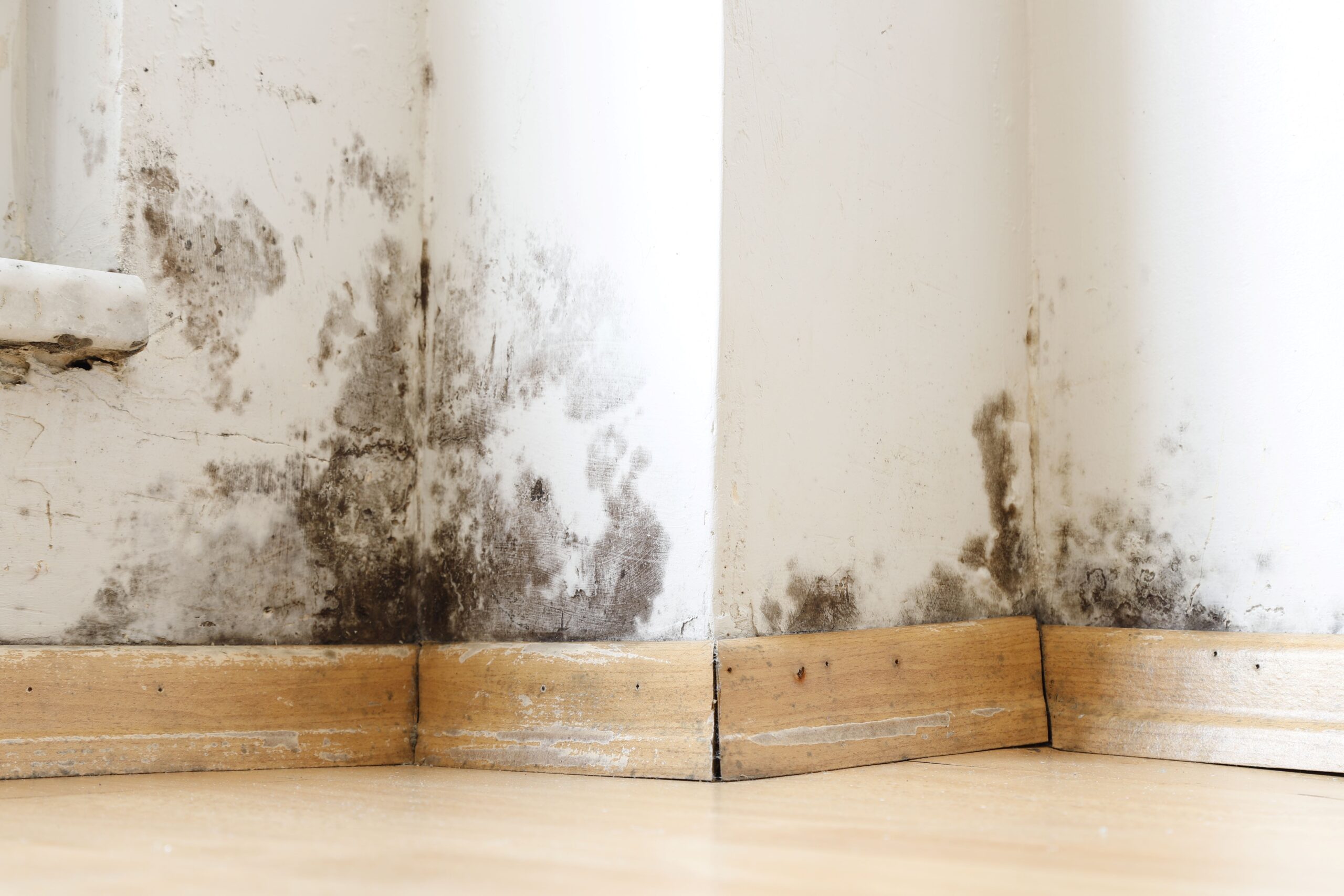Hurricanes have been a recurring and intensifying problem in many regions, and one often-overlooked consequence of these powerful storms is the long-term water damage they cause to homes and businesses. In the aftermath of such weather events, mold testing becomes essential. Mold can flourish in water-damaged environments, particularly when proper remediation steps are not taken. Regular testing after renovations and even monthly checks can ensure you maintain a healthy indoor environment, free from harmful contaminants.
At the forefront of this conversation is the risk posed by dangerous toxic molds. The most dangerous mold like Stachybotrys, Chaetomium, Aspergillus, Alternaria and Penicillium thrive rapidly in wet conditions. These molds thrive in moist environments, which are common after hurricane-induced flooding or leaks. Water-damaged buildings, if not properly remediated, create the ideal conditions for mold to grow and multiply. Mold growth is not just an aesthetic issue – it can have serious health repercussions. From asthma to pneumonia, exposure to mold can lead to a range of respiratory illnesses, particularly for those with weakened immune systems.

Why Mold Testing After Renovations is Critical
After a hurricane or any major renovation project, it’s common to think that the most immediate threats are obvious: structural damage, broken windows, or damaged siding. However, one of the most insidious dangers lurks behind walls, beneath floors, and within air ducts – mold. Mold testing should be an integral part of any renovation project to prevent hidden growth that could lead to long-term health risks.
Water damage to porous building materials, such as drywall, carpet, and insulation, creates the perfect breeding ground for molds. Even in homes that have undergone significant drying and renovation efforts, mold can remain hidden in unseen spaces like air ducts, crawlspaces, or within the walls. These hidden mold colonies can easily go unnoticed until symptoms of mold exposure start to affect the occupants.
Common molds like Stachybotrys, also known as black mold, and Chaetomium are notorious for thriving in moist environments and can lead to serious health concerns. Stachybotrys, for example, is highly toxic and linked to respiratory issues like coughing, wheezing, asthma, and in severe cases, even pneumonia. Exposure to these molds can compromise the immune system and lead to chronic health conditions, especially in vulnerable populations such as the elderly, children, and individuals with pre-existing health issues.
Aspergillus and Alternaria Penicillium are also highly common in water-damaged environments, posing additional risks. These molds are airborne, making them easy to inhale, which can result in severe allergic reactions or respiratory issues, particularly in people who are sensitive or allergic to mold spores. The longer these molds remain undetected, the more likely they are to spread, causing widespread contamination and further increasing the risks to health.
Mold-Resistant Materials: The Key to Preventing Future Problems
One of the most effective ways to combat mold in water-damaged homes is by using mold-resistant materials when renovating. Traditional drywall and carpeting are highly susceptible to mold growth, especially after exposure to moisture. Replacing these materials with more durable, mold-resistant options can make a huge difference in maintaining a healthy environment.
For example, when refinishing walls, consider using mold-resistant wallboard materials like Durock (cement board) or DensArmor (paperless wallboard). These materials are specifically designed to resist mold growth, even in damp environments. Traditional wallboard has a paper coating, which acts as a food source for mold, while paperless options like DensArmor eliminate this risk. Similarly, cement board is highly resistant to moisture and does not provide the necessary nutrients for mold to thrive.
Carpet, which can trap moisture and quickly become a breeding ground for mold, should ideally be replaced with a hard floor system that is resistant to moisture and does not off-gas harmful chemicals. Options like tile, hardwood, or luxury vinyl plank are not only more resistant to mold growth, but they are also easier to clean and maintain. Plus, many of these materials are VOC-free, reducing your exposure to harmful chemicals that can linger in your home after renovation.
In addition to replacing materials, it’s essential to address the air-handling systems within your home. Mold can easily spread through your HVAC system if proper cleaning and maintenance steps are not taken. Air ducts should be regularly cleaned, especially after renovation or water damage, to ensure that no mold spores are being circulated throughout your home. Make sure you schedule professional air duct cleaning with a licensed and reputable firm to guarantee thorough cleaning of the entire system.

Renovation Risks: Protecting Your Lungs from Particulate Matter
Renovations themselves, especially in a water-damaged home, present their own risks to your health. During the renovation process, ultrafine particulate matter is released into the air. This can include particles from construction materials, old insulation, or even mold spores that have been disturbed during the demolition process. These ultrafine particles are extremely dangerous because they can be inhaled deeply into the lungs, potentially causing permanent lung damage.
One particular hazard during renovations is exposed fiberglass insulation. When disturbed, fiberglass releases tiny glass fibers into the air, which can be inhaled and lead to serious respiratory issues. Long-term exposure to fiberglass can cause scarring of the lungs, which is a permanent condition that reduces lung capacity and overall respiratory health. Always ensure that proper protective measures are taken during renovations, including sealing off areas where fiberglass is being removed and wearing appropriate respiratory protection.
When it comes to refinishing your home, using VOC-free paint is also critical. Volatile Organic Compounds (VOCs) are harmful chemicals found in many paints, finishes, and building materials that can off-gas into the air long after the renovation is completed. VOC exposure has been linked to a range of health issues, including headaches, dizziness, and respiratory problems. Opt for low- or no-VOC paints and finishes to ensure that your indoor air quality remains safe.
The Health Risks of Mold Exposure
Mold exposure can lead to a wide array of health issues, particularly for those with allergies, asthma, or weakened immune systems. The symptoms of mold exposure can vary from mild allergic reactions to more serious respiratory illnesses. Common symptoms include coughing, sneezing, eye irritation, throat irritation, and skin rashes. In more severe cases, prolonged exposure to mold can lead to asthma, pneumonia, and other chronic respiratory diseases.
Individuals with pre-existing health conditions, such as asthma, are particularly vulnerable to the effects of mold exposure. Mold spores can trigger asthma attacks and exacerbate symptoms in individuals with respiratory conditions. For those with weakened immune systems, mold exposure can lead to severe infections, which can be difficult to treat and may result in long-term health consequences.
Routine Mold Testing: The Key to Ongoing Protection
To ensure that your home remains free of mold after a renovation or hurricane event, it’s essential to establish a routine mold testing schedule. Regular mold testing allows you to detect and address any mold issues before they become severe, reducing the risk of long-term health consequences. Monthly mold testing is recommended, particularly in homes that have experienced water damage or are located in humid climates.
At IndoorDoctor, we offer on-demand air quality and mold testing services to help you maintain a healthy indoor environment. Our testing process is thorough and includes air sampling, surface sampling, and an inspection of the areas most susceptible to mold growth, such as basements, crawl spaces, and HVAC systems. With IndoorDoctor, you can rest assured that your home is safe, and any mold issues will be addressed promptly before they lead to serious health risks.
For more information on our on-demand mold testing services, visit our website here.
Only professional-grade testing, using calibrated bio-pumps and performed by trained technicians, ensures accurate and reliable mold detection. This is why IndoorDoctor advocates for routine professional air quality assessments, especially after water damage or renovations.

DIY Home Test Kits Are Not Reliable: Limitations of Settling Plates Without Airflow
A common DIY mold testing method is using settling plates, but these have significant limitations. Settling plates rely on mold spores falling onto the surface, but without active airflow to distribute the spores, the results are often inaccurate. Mold spores in the air are not always evenly dispersed, and without air movement, the test may fail to capture the true concentration of airborne spores. Moreover, settling plates only detect molds that are heavy enough to drop out of the air naturally, missing the lightweight spores like those of Aspergillus and Penicillium
Professional mold testing, on the other hand, uses calibrated air sampling equipment that actively draws air through a filter to capture a more accurate sample of airborne spores. This method ensures that all types of molds present in the environment are detected, providing a more comprehensive assessment of indoor air quality. For reliable and accurate mold testing, it is essential to use professional-grade equipment such as those provided by IndoorDoctor.
IndoorDoctor’s blog on DIY mold test kits.

Conclusion: The Crucial Role of Monthly Mold Testing After Flooding
In a world where hurricanes and water damage are becoming more common, it’s essential to prioritize the health and safety of your home’s indoor environment. Mold can be a serious health risk, particularly for those with respiratory issues, allergies, or weakened immune systems. By taking the proper steps during renovation, such as replacing porous materials with mold-resistant options, scheduling professional air duct cleaning, and opting for VOC-free finishes, you can significantly reduce the risk of mold growth.
Routine mold testing, both after renovations and on a monthly basis, is the best way to protect your family from the hidden dangers of mold. At IndoorDoctor, we’re here to help with our comprehensive mold testing services, ensuring that your home remains a healthy, mold-free environment year-round. Don’t wait until you’re experiencing symptoms – schedule a mold test today to ensure that your home is as safe as possible.
**References:**
1. “Stachybotrys” – *Newton Microbial Laboratory*. This article provides insights into the growth patterns, health effects, and remediation strategies for *Stachybotrys* mold. Retrieved from [Newton Microbial Laboratory](https://newtonlaboratory.com/mold/stachybotrys)【8†source】.
2. “A Practical Guide to Indoor Mold and Mold Testing” – *Property360*. This guide outlines the significance of mold-resistant materials during renovations and provides expert advice on mold control and air handling systems. Retrieved from [The Building Inspector](https://www.thebuildinginspector.net)【9†source】.
3. “Chaetomium” – *NewJerseyMold.com*. This article discusses *Chaetomium* mold, highlighting its health risks and common presence in water-damaged environments. Retrieved from [New Jersey Mold](https://www.newjerseymold.com)【10†source】.
4. “Stachybotrys – Mold Busters” – This comprehensive resource explains the hazards posed by *Stachybotrys* (black mold), including its effects on health and how it thrives in moisture-prone areas. Retrieved from [Mold Busters](https://library.bustmold.com)【11†source】.
For more information on routine mold testing, visit [IndoorDoctor On-Demand Air Quality Testing](https://www.indoordoctor.com/on-demand-air-quality-testing/).




